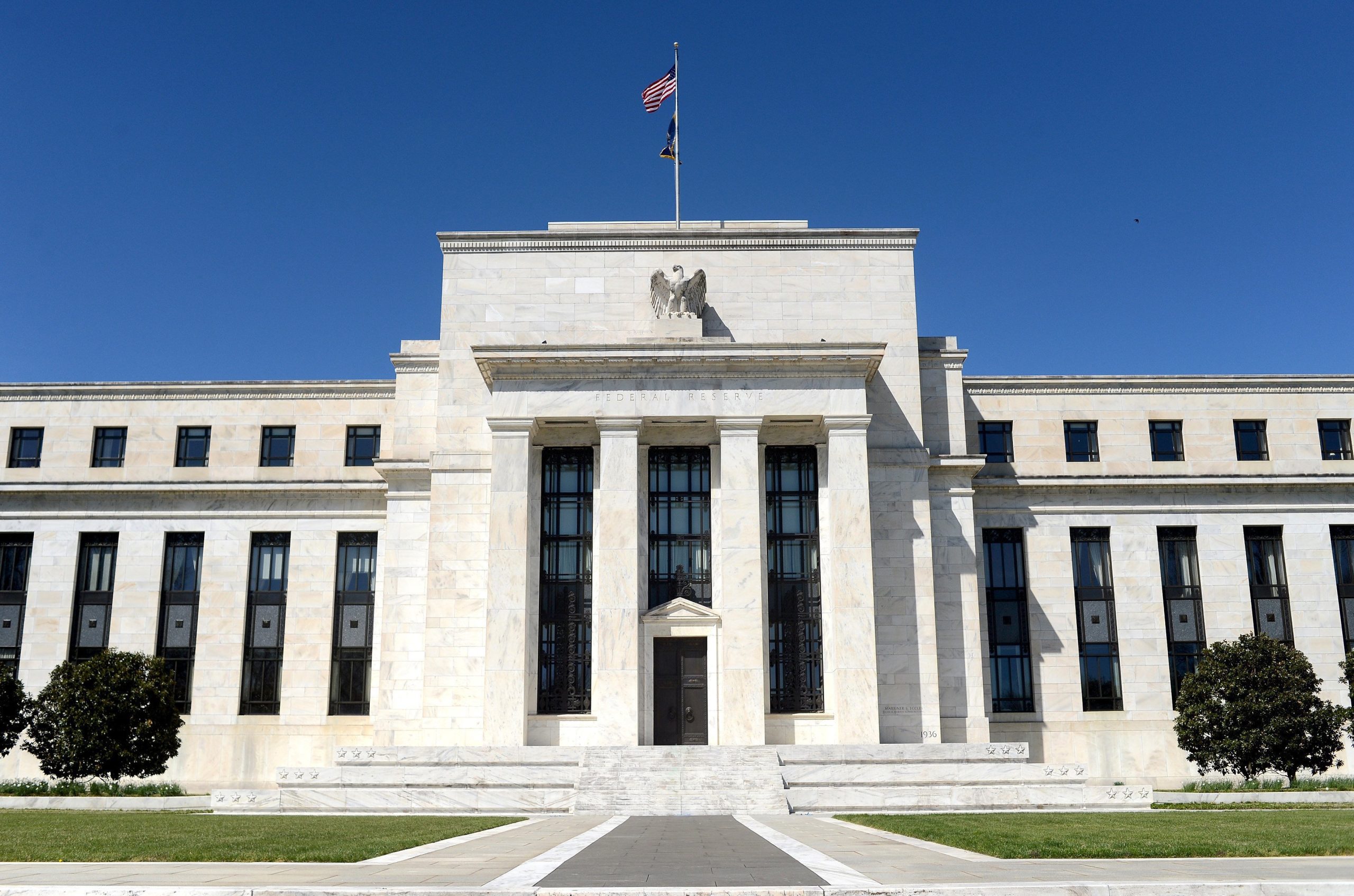In recent weeks, alternative media and online platforms have been buzzing with discussions about the intensifying pressure on the Federal Reserve, particularly Chair Jerome Powell, to lower interest rates. These sources, often outside the mainstream media, highlight a narrative that the Fed’s reluctance to cut rates is not just an economic decision but potentially a strategic move to hinder the current administration’s agenda. Here’s a deep dive into the latest developments, the speculation surrounding Powell’s motives, and what we might expect in the next 30 days.
The Pressure Campaign Intensifies
Non-mainstream outlets and social media platforms like X have reported a significant escalation in the Trump administration’s efforts to push the Federal Reserve toward lowering interest rates. Posts on X, for instance, have highlighted President Trump’s direct demands for immediate rate cuts, with some users suggesting that Powell’s refusal is costing the U.S. economy “hundreds of billions.” One post claimed Trump is calling for rates to drop to under 1%, accusing Powell of being a “knucklehead” and “stupid guy” for maintaining high rates, which are seen as burdensome for businesses and consumers.
The administration has also leveraged the $2.5 billion Federal Reserve headquarters renovation project as a point of criticism, alleging mismanagement by Powell. Alternative sources have noted that Trump’s visit to the Fed on July 24, 2025, was less about inspecting construction and more about publicly pressuring Powell. During this visit, Trump clashed with Powell over the project’s cost overruns, reportedly inflating the price tag to $3.1 billion, a figure Powell disputed. Some online commentators have suggested that this focus on the renovation is a pretext to build a case for firing Powell, though legal experts argue that cost overruns do not meet the threshold for removal “for cause” under U.S. law.
Speculation: Is Powell Stalling the Administration?
A recurring theme in non-mainstream media is the speculation that Powell’s refusal to cut rates is politically motivated, aimed at stalling the Trump administration’s economic goals. Posts on X have fueled this narrative, with one user claiming Powell is in an “impossible position” due to Trump’s demands, coupled with accusations of a “renovation scandal” and threats of a “shadow Fed chair.” Another post suggested that Powell’s inaction is deliberate, with the Fed potentially acting as a counterweight to Trump’s policies, such as his tariff agenda, which Powell has publicly cited as a reason for maintaining rates due to inflationary risks.
This speculation is not entirely baseless. Powell has acknowledged that Trump’s tariffs, announced in April 2025, have created significant economic uncertainty, potentially leading to higher inflation and slower growth. Some alternative sources interpret this as Powell using tariffs as an excuse to justify a “wait-and-see” approach, which critics argue delays economic stimulus that could benefit the administration’s growth-oriented policies. One X post even suggested that Powell’s “stubbornness” is costing Americans, with calls for Trump to appoint a new Fed chair to replace the “too late” voice.
However, it’s worth noting that Powell has consistently emphasized the Fed’s independence, stating that decisions are based solely on economic data and not political pressure. Critics of the speculation argue that the Fed’s cautious stance is driven by genuine concerns about inflation, particularly with tariffs potentially pushing prices higher. The minutes from the Fed’s June 2025 meeting revealed a split among officials, with some like Christopher Waller advocating for cuts if inflation stabilizes, while others remain wary of tariff-driven price pressures. This internal debate suggests that Powell’s position may reflect a broader consensus within the Fed rather than a personal vendetta.
Economic Context and Market Reactions
The Fed has maintained its benchmark interest rate at 4.25%–4.5% since December 2024, following three cuts earlier that year. Alternative media have highlighted market frustrations with this stance, noting that Treasury yields have risen, with 30-year yields topping 5% in July 2025 as investors brace for potential inflation from a more compliant Fed chair. Posts on X have also pointed to market expectations of aggressive rate cuts if inflation data, such as the Consumer Price Index (CPI), comes in below 2.4%, which could boost liquidity and benefit assets like cryptocurrencies.
The administration’s push for a 3-percentage-point cut is seen as extreme by some economists, who note that such drastic reductions typically occur during severe economic distress, not in an economy described as “resilient” by Powell. The tension has led to market volatility, with the Dow, S&P 500, and Nasdaq experiencing significant drops in April and July 2025 following tariff announcements and Trump’s attacks on Powell.
What to Expect in the Next 30 Days
Looking ahead to the next 30 days, several key developments are likely to shape the narrative around the Fed’s interest rate decisions:
-
Federal Reserve Meeting (July 29–30, 2025): The Fed is widely expected to hold rates steady at 4.25%–4.5% during its upcoming meeting, as indicated by Fed funds futures showing a 76% likelihood of no change. Powell’s post-meeting press conference will be closely watched for any hints of future cuts, particularly if new economic data, such as the CPI or labor market reports, show signs of weakening. Alternative media may amplify any perceived defiance by Powell as further evidence of stalling.
-
Continued Political Pressure: The Trump administration is unlikely to relent in its criticism of Powell, especially with the renovation project remaining a focal point. Non-mainstream sources suggest that Trump may escalate his rhetoric or push for legal avenues to pressure Powell, though firing him remains legally challenging. Posts on X indicate that allies like Treasury Secretary Scott Bessent may call for internal reviews of the Fed’s operations, keeping the spotlight on Powell’s leadership.
-
Market Reactions and Data Dependency: Markets will remain sensitive to any signals from the Fed or the administration. If upcoming inflation data shows moderation, alternative media may speculate on imminent rate cuts, potentially boosting equities and crypto markets. However, persistent inflationary pressures from tariffs could reinforce the Fed’s cautious stance, leading to further market volatility. Economists expect the Fed to wait for clearer data on tariff impacts before acting, likely delaying cuts until September or later.
-
Speculation and Public Sentiment: Non-mainstream outlets and X posts will likely continue fueling speculation about Powell’s motives, particularly if economic indicators weaken. The narrative that Powell is deliberately stalling the administration could gain traction if no rate cuts materialize, potentially influencing public sentiment and political discourse. However, any attempt to oust Powell could backfire, raising long-term interest rates and unsettling markets, as warned by economists.
Conclusion
The pressure on the Federal Reserve to lower interest rates is a complex interplay of economic policy, political maneuvering, and market dynamics, amplified by non-mainstream media and platforms like X. While speculation about Powell’s intentions to stall the Trump administration persists, the Fed’s cautious approach appears rooted in concerns about tariff-driven inflation and economic uncertainty. Over the next 30 days, expect heightened rhetoric, a likely unchanged rate decision, and continued market sensitivity to both Fed actions and administration policies. Whether Powell’s stance is strategic or purely data-driven, the coming weeks will be critical in shaping the economic narrative and the Fed’s independence.


 Facebook
Facebook
 X
X
 Pinterest
Pinterest
 Copy Link
Copy Link
